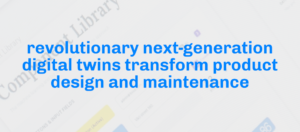In recent times, we’ve empowered numerous customers to innovate by creating digital products seamlessly integrated with their existing physical offerings. Witnessing the success stories where digital products surpass traditional ones in revenue has been incredibly rewarding for us.
At the same time, we’re being approached by different manufacturers ranging from consumer dairy products to weapons. Initially, they’re most interested in digitalizing their factories and logistics processes in order to boost efficiency, but through our service design process we always challenge them about the relationship with their end customers. The pivotal question is whether they’re still in the fire-and-forget business without a relationship, or if they’ve taken any first steps towards truly managing their real customers.
Even though consumer goods businesses are often considered conservative and slow-moving, there are striking differences on how they interact with their end customers and how they control the customer experience.
Take Coca-Cola, for instance. Partly due to their ultra strong brand, they are sovereign in how retail shops are presenting and selling their product. Coke decides the shop floor locations, lighting, quotas, reporting – everything – and shopkeepers must obey in order to keep selling Coke.
Then compare Coke to your average milk and general dairy producer, who likely commands larger revenue than Coke in any particular shop. In their case, the retailer sets the rules and often pricing too, and often makes two or three producers compete to even get to the shop fridge. In many countries, there is a duopoly of supermarkets which tightly controls the dairy customer base.
Then there are delightful new initiatives, like the one fish producer John West has created. They’ve decided to re-establish the connection with their end customers by having their metal cans labeled with a unique QR code, which can be read by phone and which reveals the fishing vessel, captain, region of fishing and guarantee of sustainable fishing – of the fish in that particular can. Marketingy, but already quite powerful, and feels real.
I see that by combining the Coke and John West ways, added with an organization-wide BaseN spime implementation, manufacturers can turn the tables and quickly start commanding their end customer base again, with pathway to personalized and mass-customized products. Companies like Uber and Airbnb built their digital infrastructure from scratch, but now the same power is available to any manufacturer via BaseN. They key is to have guts for it and challenge the legacy manufacturer-wholesaler-retailer structure.
Waiting to get my adapted, weekly Cheese Sortiment-as-a-Service, directly from the manufacturer, only to be channeled through the retailer. On BaseN.
,





2 replies on “Who controls your customer base? On to new Manufacturer-Customer Dynamics”
Hi basen.net admin, Thanks for the informative and well-written post!
To the basen.net administrator, Thanks for the comprehensive post!